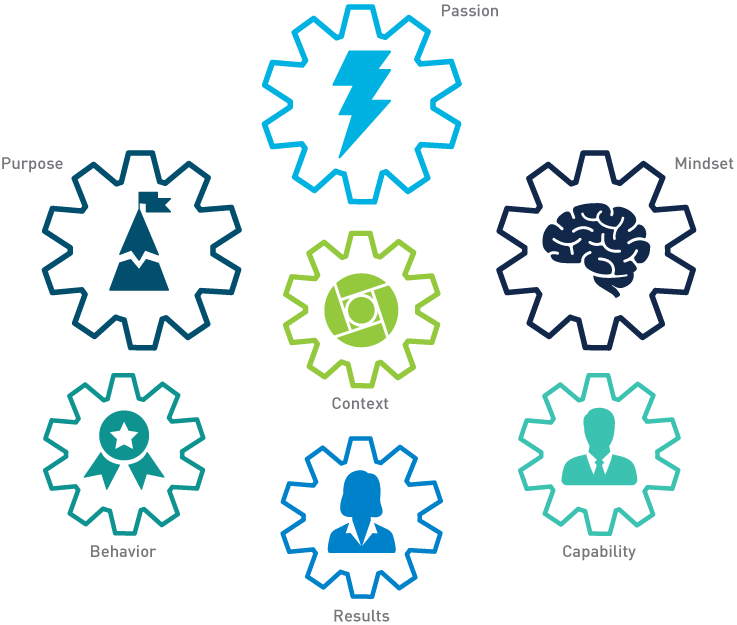The interview and assessment process is challenging for both candidates and employers. Traditional skills assessments focus on evaluating the capability, behavior and results of candidates.
Research shows that these traditional measures can predict the future success of certain candidates in specific roles; however, now that change is constant, we believe that traditional assessments work best under two conditions:
- When the candidate has had the opportunity to develop specific knowledge, skills and abilities through their past work experience.
- When the organization is very clear about the requirements of the role.
While traditional assessments can predict the success of an individual candidate under those circumstances, they may not accurately predict failure. We also know that they can actually lead to less diversity because certain groups perform worse on narrow skills assessments. According to the Harvard Business Review, U.S. companies that have instituted written skills tests for managers see decreases of 4 percent to 10 percent in the share of managerial jobs held by white women, African-American men and women, Hispanic men and women, and Asian-American women during the proceeding five years.
Current economic conditions and the growing competition for talent call for a better process. Traditional assessments can be effective; we shouldn’t ignore them. However, they are only a portion of what research shows can predict success in a role. By combining traditional capability, behavior and results assessments with new measurements that focus on passion, purpose and mindset, we can better predict the success of candidates.
Challenges of the Current Process for Candidates:
- The process is often long with multiple stages of video, phone and in-person interviews as well as potential skills assessments.
- Candidates don’t feel they can show the full spectrum of who they are, and they may miss out on an opportunity because of one weakness even though they have several strengths.
- The process doesn’t give candidates enough of an opportunity to understand the culture and values of the organization or show hiring managers why they would want to work there.
- The process provides minimal opportunity to demonstrate their passion.
- Candidates don’t get a lot of feedback as they move through the process, especially at the earlier stages.
Challenges of the Current Process for Employers:
- Strong candidates can become disengaged and remove themselves from the process if there are too many stages.
- Strong candidates are often screened out when they have unmeasured strengths that would lead them to succeed in the role.
- There is no objective way to measure if a candidate will be engaged and happy in the role.
- Certain assessments can be more difficult for certain groups of people, resulting in less cognitive diversity among the candidates who make it through the process.
Defining the Terms
When thinking about the factors that we evaluate to determine if a candidate is a good fit, it’s best to think of them like individual gears that work together to drive how a candidate works. What each candidate brings to a role is a combination of their capabilities, behavior, results, passion, purpose and mindset. When those gears work together in the right environment, the candidate will be a successful employee.

Capability: Capability is a candidate’s core intellectual ability and capacity. Cognitive ability tests that measure a person’s verbal or numerical capabilities can have a moderate to strong correlation with performance. Traditional assessments and interviews measure capability.

Behavior: A candidate’s past behavior and personality-based behavioral preferences work relatively well to predict performance. These can be measured through structured interviews where a candidate explains what they did in the past or during an assessment where an employer can observe a candidate take an action. Behavior is measured during traditional interviews and assessments.

Results: Results are what a candidate has already achieved in terms of the knowledge, skills and experience that are required to deliver in a role. Results can be evaluated through skills-based work examples. This is something traditionally reviewed during the interview and assessment process.

Passion: Passion is a candidate’s enthusiasm, enjoyment and commitment to mastering the requirements of a role. When an employee is passionate about a role, they are engaged. According to Gallup, 85 percent of workers are not engaged in their current roles. Dale Carnegie Training reports that organizations with engaged workers outperform their peers by 202 percent. However, most employers don’t currently have a method to effectively understand what a candidate is passionate about.

Purpose: Purpose is a candidate’s alignment with and willingness to contribute to the vision and values of an organization. One study reported by McKinsey found that, out of 100 variables, employees reported that seeing purpose and value in their work was their most motivating factor – even more so than compensation.
Purpose-driven work is especially important for younger workers. According to Cone, 75 percent of millennials and 55 percent of all age groups in the U.S. would take a pay cut to work at a socially and environmentally responsible company. Despite this, the traditional interview and assessment process doesn’t include a deep dive into whether the candidate aligns well with the purpose of an organization.

Mindset: Mindset is a candidate’s belief about themselves and their basic qualities. These beliefs are rarely measured by employers. There are two types of mindset: fixed and growth.
- MFixed mindset is the belief that one’s talents are innate gifts and not malleable.
- Growth mindset is the belief that one’s talents can be developed through education and effort.
People with a growth mindset achieve more throughout their lives because they’re focused on learning. In children, growth mindset is correlated with increased test scores, achievement and enjoyment in school.
According to Deloitte, companies that practice a growth mindset create “designed growth” and stretch assignments and openly discuss mistakes to promote learning. Those companies are three times more profitable and have four times better retention than those that do not.
We believe that passion, purpose and mindset can have as much impact on performance as core intellect, what you’ve achieved and how you’ve behaved. Most employers are not assessing for all of these factors, so they are missing out on a comprehensive look at candidates. As part of PeopleScout’s talent advisory practice, we have developed a model that evaluates all six performance indicators.
The Whole Person Model

We developed the whole person model to evaluate capability, behavior, results, passion, purpose and mindset and how they interact. In this graphic, the gears operate together to contribute to the success of the candidate.
At the center is context. The way we measure all six factors depends on the role and the broader context of the organization. In the whole person model, assessments are built with a deep understanding of the organization and the factors that contribute to success in a particular role. For example, the way we measure results and passion will be different for an engineer at a large tech company than a retail sales representative.
In this graphic, you will also notice that each gear is a different size. The relative size of the gear demonstrates the weight of each factor in predicting success. We believe that mindset, passion and purpose should be key factors in assessing candidates for a particular role; however, the relative weighting of each factor will be determined by the context of the role and the organization.
The whole person model measures each candidate in a way that gives all candidates the opportunity to show their best selves. For example, if a candidate has not shown significant results thus far in their career, but they demonstrate a large amount of passion for the industry and the role, that passion could make up for the other weakness.
By looking at candidates through the lens of the whole person model from the start, we provide a more intellectually diverse slate of candidates. This is because the model identifies candidates who excel in different ways. The model more effectively identifies candidates who have the passion and purpose that align with an organization and the mindset to experience continued success in the future.
Benefits of the whole person model:
- Increase ability to source candidates with skills of the future
- More engaging candidate experience
- Shorter hiring process
- Enhance the ability to measure the strengths of a person earlier in the process
- Expand the ability to measure future readiness
- Improve cognitive diversity
- Lengthen employee tenure
- Boost perceived fairness from candidates
Key Takeaways:
- Traditional assessments that focus on a candidate’s capability, behavior and results are not enough to predict success in the current candidate market.
- We believe that passion, purpose and mindset should be key factors in assessing candidates for any role.
- The whole person model is built to look at each candidate holistically, so employers get a slate of stronger, more diverse candidates.
This article is the second in a series, you can read the first article, Assessing for Passion, Purpose and a Growth Mindset: Drivers for Change, here and the third, Assessing for Passion Purpose and a Growth Mindset: The Whole Person Model in Practice, here.

![[Webinar] Smart Hiring in the AI Age: What UK Candidates Are Really Doing in 2025](https://www.peoplescout.com/wp-content/uploads/2025/05/AI-enable-applicant-report-320x320.jpg)
